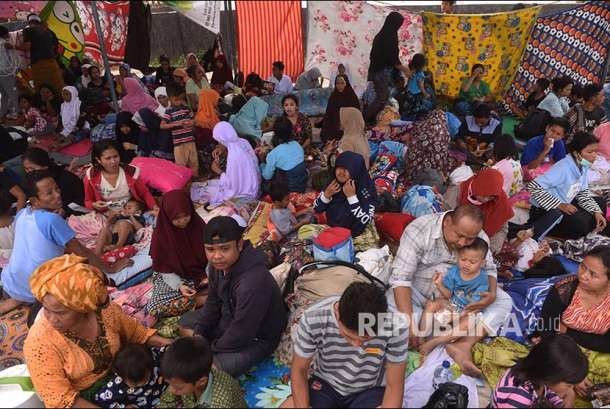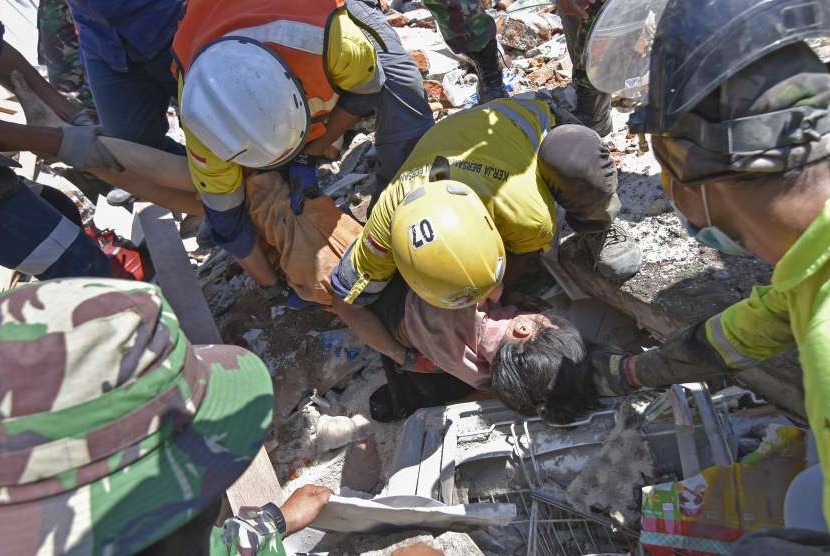REPUBLIKA.CO.ID, JAKARTA -- The Meteorology, Climatology and Geophysics Agency (BMKG) revealed as of Tuesday, 230 aftershocks hit Lombok. The Head of BMKG, Rahmat Triyono, said that aftershocks were estimated to occur in Lombok and the vicinity areas.
He added that the strength of aftershock's trend is decreasing. It would not exceed above 7 RS. The 7 RS-earthquake in Lombok on Sunday was type II because it had preceded a preliminary earthquake on Sunday (July 29) with a force reaching 6.4 RS.
"The impact of such condition is that the aftershocks are not big in Lombok. If the magnitude is rather large, it could have an impact on the surrounding islands," he said.
Rahmat noted that although there is a potential for aftershocks with a smaller magnitude compared to the main earthquake, people are expected to remain vigilant. Moreover, most of their houses are tilted, cracked or damaged.
"The tilted buildings should not be inhabited. For the next few days, people had better stay in refugee camps," he said.

Residents stays at emergency tent build around their residence in West Lombok, West Nusa Tenggara, Monday (Aug 6).
Earthquakes can occur at any time without being predictable, depending on the movement of the faults or tectonic plates along with collisions, he explained. Rahmat said the aftershocks would end, but they could be repeated as long as the Flores Fault is active.
"The tectonic plate is unstable and continues to move," he said.
BMKG has stated that the earthquake measuring 7 on the Richter Scale (RS) that shook Lombok, West Nusa Tenggara on Sunday was the result of the Flores Back Arc Thrust activity. The Thrust stretched from East Nusa Tenggara to Bali in the north.
"It subdued the earth plates along Nusa Tenggara, including Lombok Island," Rahmat said.
The fault plane rising in the back of the Flores Arc slides into the Lombok mainland, causing collisions that produced earthquakes. Rahmat explained that because the Lombok earthquake was shallow and there were fissures due to the movement of the fault of the Lombok land, the modeling showed tsunami potential. Therefore, BMKG had issued an early warning of tsunami alert.
After the warning, a small tsunami occurred at four points, namely in the villages of Carik at 13.5 centimeter high, Badas at 10 cm, Lembar at 9 cm, and Benoa at 2 cm. However, the early warning ended at 08.25 p.m. local time on Sunday (Aug 5).
The status of the tsunami potential was at the alert level because the height was less than 0.5 meters.


